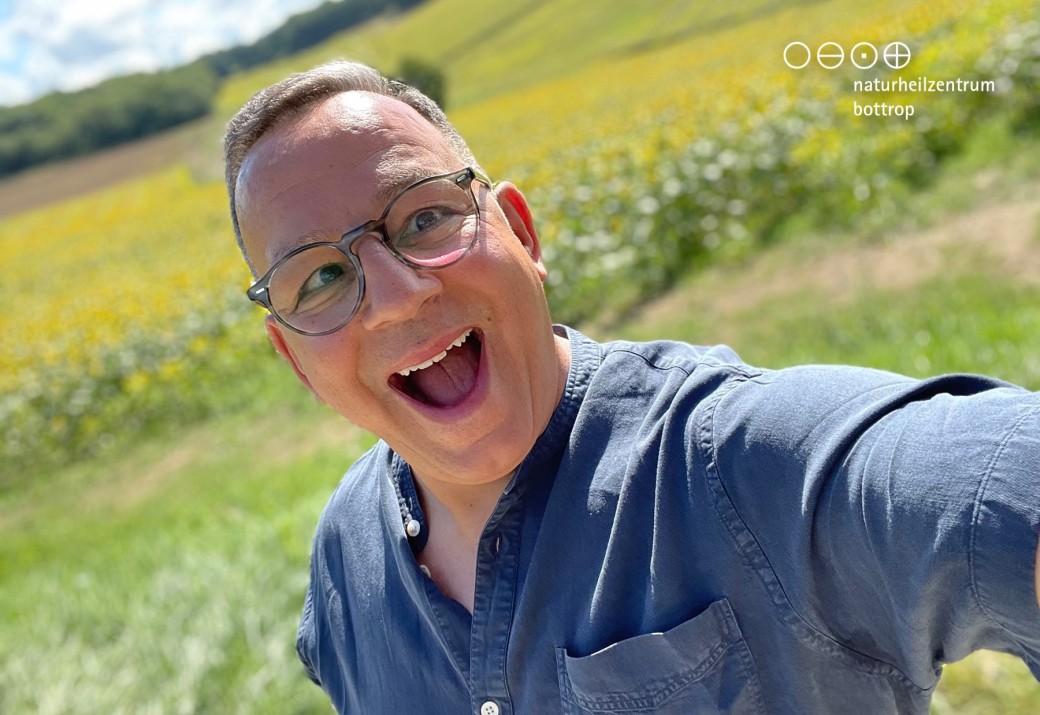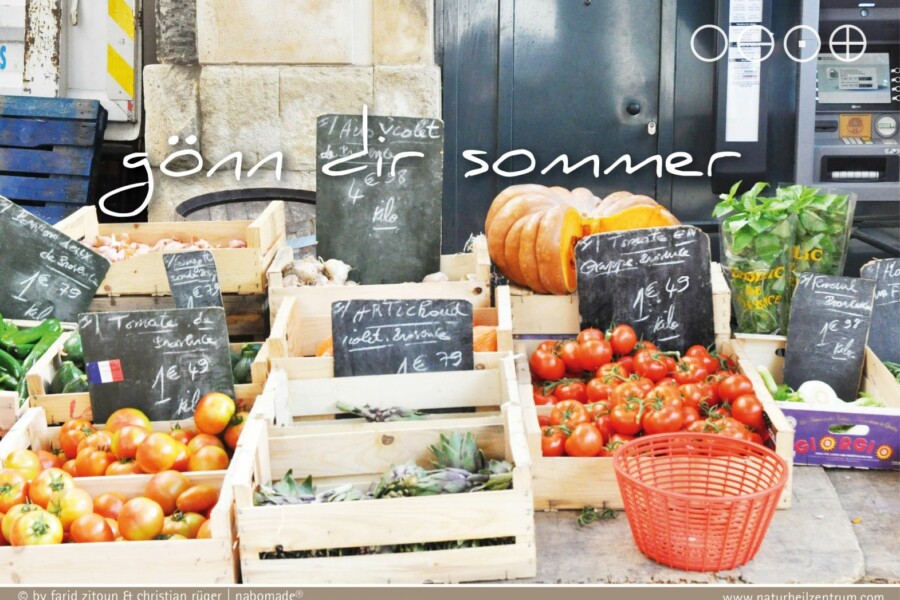It’s healthy: we practice happiness – do you?

Are you "lucky" or "happy"?
What is happiness? In any case, a state that we all long for again and again. “Happiness or being happy is as individual as People are,” knows Christian Rüger from the Bottrop naturopathic practice. For one Person happiness means the delicious cup of coffee in the morning, for another happiness only starts from the lottery million – in line with the saying of the Roman philosopher Seneca: “Happy is not who appears so to others, but who thinks himself so.” It is astonishing, however, that we Germans use the one word “happiness” to mean both chance happiness (having luck) and life happiness (being happy). Our direct European neighbors have a more differentiated view: When the English are lucky, they are “lucky,” otherwise they are “happy. And the French also distinguish between “bonheur,” the happiness of life, and “bonne chance,” the luck of chance. Sanskrit goes even further, knowing at least ten words to describe different feelings of happiness – from “ananda,” which stands for joyful bliss, to “sampad,” for areas in which one achieves or wants to achieve perfection.

Perhaps some of you have noticed that today’s naturheilzentrum bottrop News refers to the Newsletter that all our subscribers have already received. It starts with the picture motif of the card, which has already trickled into the mailbox of one or the other.
You read correctly: Postcard – we still write! On paper. With love, desire, but above all with a lot of passion. Delivered by the friendly letter carrier, of course. Would you also like to have it delivered free of charge? Here you become a newsletter subscriber and mail recipient.
The idea is so nice to go with the theme, what do you think about doing something good for yourself? To say it with the quote of Vincent van Gogh: “The heart of man is very much like the sea, it has its storms, it has its tides and in its depths it also has its pearls.”

Germans are happier again
If you want to know exactly how happy Germans are, the annual Happiness Atlas published by the Süddeutsche Klassenlotterie asks. According to this, Germany’s number one region for happiness was once again Schleswig-Holstein last year. The federal state regularly occupies a top spot. It is said that the further north one lives, and thus close to the traditionally happy Scandinavian countries such as Denmark or Norway, the higher one’s happiness in life.
So it can’t really be the climate, but perhaps rather the common understanding of “hygge“. The climber of the year is North Rhine-Westphalia, which ranks third after Bavaria this year. Overall, the happiness level in Germany has recently recovered slightly. Probably also due to the end of the pandemic measures. This was certainly due in no small part to the end of homeschooling, which has caused a great deal of stress among families and especially women. Certainly, more than a few have noticed in recent months that the happiness depots have not necessarily filled up in such a way that one could draw on them at present or even in coming crises. Nevertheless, the signs point to an increase in the level of happiness, perhaps also due to the “happiness lessons” ..

Happiness lessons – happiness can be learned
Since the beginning of the winter semester 2022/2023, 300 elementary school students in Braunschweig have been taught a very special school subject: In addition to arithmetic, learning and sports, “happiness lessons” are also on their timetable. There are already many projects around the world in which “happiness skills” are taught in schools. In the Indian city of New Delhi, for example, one million children have an hour of happiness lessons every day. And at the Geelong Grammar School in Australia, one of the pioneers in happiness education, students have two hours of happiness lessons every week.

One of the initiators of the Braunschweig project is graduate psychologist Tobias Rahm from the Institute of Educational Psychology at the TU Braunschweig. “If we want a world with less depression and stress and instead more compassion, appreciation and mental health, our schools are probably the best place to start,” explains the graduate psychologist. “Findings from the field of positive psychology suggest that People with high levels of well-being are more creative and productive, better at solving problems, have stronger immune systems and greater resilience to mental stress, among other things.” Happy People even live longer, Rahm said. In addition, the individual experience of happiness can be specifically improved through training, he said.

Happiness Exercise “Three Good Things”
With a very simple exercise from the Brunswick happiness researchers, you too can learn to be even happier. It’s called “Three Good Things” and goes like this: Every day for a week, at a fixed time before bed, write down three things that made you happy today – for example, when the bakery saleswoman smiled at you in a friendly way while you were getting rolls or when you received positive feedback from your boss. In this way, you practice focusing your perception more on the positive and thus having more positive feelings. In a second step, you write down your own contribution to the positive experiences and thus anchor the attitude that you are indeed “the architect of your own happiness”!

Foods that make you happy
Not only love goes through the stomach, happiness too! On the one hand, this is learned, for example, when we “reward” ourselves with something sweet or remember our childhood when eating our favorite food. But there are also foods with ingredients that support biochemical processes in our bodies, such as the formation of the happiness hormone serotonin. “These particular hormones are called endorphins,” explains alternative practitioner Farid Zitoun. “They make us look good, glow and feel good, and even keep us healthy!” A good example of such foods is dark chocolate. The cocoa it contains is high in the amino acid tryptophan, a serotonin precursor. Bananas, nuts and seeds also contain a lot of tryptophan.

Bananas and nuts are also characterized by a high content of magnesium, which reduces the activity of nerve cells and thus helps against stress. The B vitamins they contain also serve as nerve food. By the way, a processed “happy food” is whole grain bread: it contains not only tryptophan and magnesium, but also complex carbohydrates that challenge our stomach and make us feel satisfied and tired – the perfect base for supper!

By the way: more on the topic of health and “happiness nabomade” can be found on the Naturheilzentrum Bottrop YouTube channel. There, the Youtuber and alternative practitioner Farid Zitoun and Christian Rüger reveal their Personal highlights on the topics of health and lifestyle-to-go or how you can find the big and small happiness.






